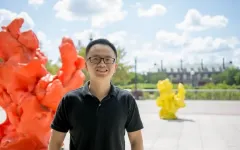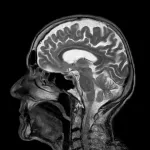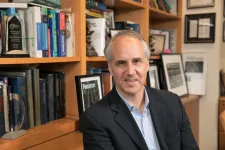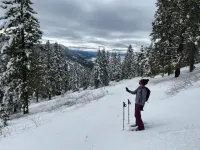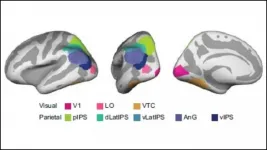(Press-News.org) Researchers at the Center for Advanced Bioenergy and Bioproducts Innovation (CABBI) found that transitioning land enrolled in the Conservation Reserve Program (CRP) to bioenergy agriculture can be advantageous for American landowners, the government, and the environment.
Land enrolled in the CRP cannot currently be used for bioenergy crop production, wherein high-yielding plants (like miscanthus and switchgrass) are harvested for conversion into marketable bioproducts that displace fossil fuel- and coal-based energy. Established by the U.S. Department of Agriculture in 1985, the CRP incentivizes landowners to retire environmentally degraded cropland, exchanging agricultural productivity for native habitats and accepting annual government payments in return.
As the world warms and its population explosively expands, global demand for food production is at odds with the decreased agricultural productivity threatened by extreme climate conditions. Therefore, allocating CRP land for high-yielding energy biomass might eliminate the need for bioenergy crops and food crops to vie for space.
A team led by CABBI Sustainability Theme Leader Madhu Khanna and Ph.D. student Luoye Chen developed an integrated modeling approach to assess the viability of transitioning CRP land in the eastern U.S. to perennial bioenergy crops. Their paper, published in Environmental Science & Technology in January 2021, confirmed that the land-use transition is indeed viable provided that certain key conditions are met.
"As proponents of a safer, more sustainable bioeconomy, we must prioritize displacing fossil fuels," said Khanna, who is also Acting Director of the Institute for Sustainability, Energy, and Environment (iSEE) at the University of Illinois Urbana-Champaign. "As scientists, it is our responsibility to take a thoughtful, innovative approach to mitigating greenhouse gases in a way that will prove beneficial in the long term.
"The transportation and electricity sectors are looking to expand bioenergy production, and it is imperative that the agricultural sector do the same. This necessitates a program wherein bioenergy cropland and food cropland coexist rather than compete."
The CABBI team takes an integrated approach to weighing the costs and benefits of swapping the CRP status quo -- uncultivated acreage -- for bioenergy, combining the Biofuel and Environmental Policy Analysis Model (BEPAM) with the biogeochemical model DayCent (Daily Time Step Version of the Century Model).
BEPAM assesses net profitability, answering the key question: What precise economic conditions will incentivize CRP landowners to make the switch to bioenergy cropland? An environmental counterpoint to BEPAM, DayCent simulates the full ecosystem effects of the transition on a given county, providing a "sneak peek" into the future and shedding light on how this land-use change might affect factors like crop yield, nutrient exchange, and soil carbon sequestration.
A key component of this study aggregates data from both models to formulate a greenhouse gas (GHG) life-cycle assessment, which calculates the total GHGs mitigated by the process as a whole -- from the physical act of planting to the introduction of clean energy into the bioeconomy.
"The full life-cycle assessment really is key to understanding the big-picture results of our research," Chen said. "We take everything into account -- the process of actually growing and harvesting the feedstocks, the carbon sequestered in the soil, and the fact that ultimately, we will be displacing fossil fuels with biofuels, and coal-based electricity with bioelectricity.
"Keeping that end result in mind anchors everything else to the ultimate goal of a net positive environmental impact."
The team concluded that converting 3.4 million hectares of CRP land to bioenergy from 2016 to 2030 is economically and environmentally viable -- under certain conditions.
Economically speaking, all systems are "go" if the market price of biomass is high and the government continues to distribute appropriate CRP land rental payments. These factors can ideally function as counterweights: If biomass prices decrease, substantial land rental payments may alleviate financial stress from farmers and encourage their continued commitment to bioenergy; alternatively, soaring biomass prices would rationalize relaxed government support, saving taxpayers money. The team identified two ideal pairings: 1) landowners receive 100 percent of their original government payments and sell biomass at $75/metric ton; or 2) landowners receive 75 percent of their original payment and sell biomass for $100/metric ton. Ideally, both parties benefit.
Converting CRP land to bioenergy can also result in substantial GHG savings. Previous studies show that a large "soil carbon debt" is liable to accrue at the outset of the venture, during the planting years of miscanthus and switchgrass. However, taking into account the full life-cycle assessment mentioned above, the research team determined that the long-term effects of displacing fossil fuel- and coal-based energy with bioproducts would more than make up for this temporary loss.
Considering landowner income from biomass sales, savings in government payments to maintain existing CRP enrollment, and the monetized benefits of GHG mitigation through displacing fossil fuels (quantified using the "social cost of carbon"), the total net value of converting CRP land to bioenergy could be as high as $28 billion to $125 billion over the 2016-2030 period.
INFORMATION:
In addition to Chen and Khanna, the team includes Postdoctoral Researcher Elena Blanc-Betes, CABBI and iSEE, University of Illinois Urbana-Champaign; Associate Professor Tara W. Hudiburg, CABBI, University of Idaho; Daniel Hellerstein, Economic Research Service, U.S. Department of Agriculture (USDA); Steven Wallander, Economic Research Service, USDA; and Professor Evan H. DeLucia, CABBI, iSEE, University of Illinois Urbana-Champaign.
A new study by an international team of researchers found that adults with Down syndrome are more likely to die from COVID-19 than the general population, supporting the need to prioritize vaccinating people with the genetic disorder.
Investigators found that adults with Down syndrome were roughly three times more likely to die from COVID-19 than the general population. This increased risk was especially apparent in from fifth decade of life: A 40-year-old with Down syndrome had a similar risk of dying from COVID-19 as someone 30 years older in the general population.
The study was published this week in The Lancet's ...
Strokes are a leading cause of poor quality of life or even death in Japan and the world over. Since its characterization, several researchers have been working tooth and nail to identify drug-accessible and effective therapeutic targets for this debilitating condition. One such region of interest for drug targets is the blood-brain barrier (BBB).
The BBB is a structure located around the brain, which prevents the entry of unnecessary circulating cells and biomolecules into the brain. The blood vessels in the BBB are coated with a distinct and protective layer of sugar, called the endothelial glycocalyx, which prevents their entry. However, in the event of a stroke, which results in the blockage or severance of blood vessels in the brain, studies have shown that this ...
Skoltech researchers have designed a software-based algorithm for synchronizing time across smartphones that can be used in practical tasks requiring simultaneous measurements. This algorithm can essentially help turn several devices into a full-fledged network of sensors. The paper was published in the journal Sensors.
If you want a network of intelligent devices - say, an array of cameras capturing a dynamic scene or another kind of network of sensors - to work properly, one of the fundamental tasks you have to solve is clock synchronization: all devices should have the same timeline, often up to sub-millisecond for the more challenging tasks. Modern smartphones can easily be used as multipurpose ...
Female physicians have better patient outcomes compared with their male peers, while female patients are less likely to receive guideline-recommended care when treated by a male physician, according to a systematic review from the American College of Cardiology's Cardiovascular Disease in Women section published today in the Journal of the American College of Cardiology.
While women make up over 50% of internal medicine residents, only 12.6% of cardiologists are female. A dedicated effort to increase diversity in the cardiovascular field could help to lower implicit bias, often considered an important factor in health care disparities.
In a detailed systematic review, researchers looked at 13 studies ...
A new study from UCLA and Stanford University researchers finds that three-dimensional human stem cell-derived organoids can mature in a manner that is strikingly similar to human brain development.
For the new study, published in Nature Neuroscience February 22, senior authors Dr. Daniel Geschwind of UCLA and Dr. Sergiu Pasca of Stanford University conducted extensive genetic analysis of organoids that had been grown for up to 20 months in a lab dish. They found that these 3D organoids follow an internal clock that guides their maturation in sync with the timeline of human development.
"This is novel -- Until now, nobody has grown and characterized these organoids for this amount ...
A trio of recent studies highlight the need to incorporate behavioral and social science alongside the study of biological mechanisms in order to slow aging.
The three papers, published in concert in Ageing Research Reviews, emphasized how behavioral and social factors are intrinsic to aging. This means they are causal drivers of biological aging. In fact, the influence of behavioral and social factors on how fast people age are large and meaningful. However, geroscience--the study of how to slow biological aging to extend healthspan and longevity--has traditionally not incorporated ...
Reno, Nev. (Feb. 22, 2021)- Normally, we think of the freezing point of water as 32°F - but in the world of weather forecasting and hydrologic prediction, that isn't always the case. In the Lake Tahoe region of the Sierra Nevada, the shift from snow to rain during winter storms may actually occur at temperatures closer to 39.5°F, according to new research from the Desert Research Institute (DRI), Lynker Technologies, and citizen scientists from the Tahoe Rain or Snow project
The new paper, which published this month in Frontiers in Earth Science, used data collected by 200 volunteer weather spotters to identify the temperature cutoff between rain and snow in winter storms that occurred during the ...
Long before COVID-19 entered the picture, West Virginia had been battling two other major public health crises: opioids and HIV.
Dr. Sally Hodder, a leading infectious disease expert at West Virginia University, believes that despite the threat of COVID-19, the opioid and HIV epidemics should not be ignored. The two have become so intertwined in the Mountain State, that they must be treated together, she said.
"We cannot try to solve the opioid epidemic or our emerging HIV epidemic by combating them separately," said Hodder, who serves as director of the West Virginia Clinical and Translational Science Institute and associate vice president ...
In order to remember similar events, the brain exaggerates the difference between them. This results in divergent brain activity patterns but better memory performance, according to new research published in JNeurosci.
Memory is subjective. Different people recall the same event in unique ways, and people exaggerate the difference between similar events in their own life. Yet this type of bias can be advantageous when it helps the brain distinguish between similar things and prevent confusion.
In a study by Zhao et al., participants memorized different sets of faces paired with colored objects. Some ...
The cover for issue 46 of Oncotarget features Figure 6, "Establishment of a SARS-CoV-2 pseudovirus that expresses SPIKE protein variants on the envelope of a lentiviral core, infection of human airway epithelial cells or lung cancer cells, and demonstration of MEKi attenuation of infectivity on primary human cells," published in "MEK inhibitors reduce cellular expression of ACE2, pERK, pRb while stimulating NK-mediated cytotoxicity and attenuating inflammatory cytokines relevant to SARS-CoV-2 infection" by Zhou, et al. which reported that Natural Killer cells and innate-immune TRAIL ...
